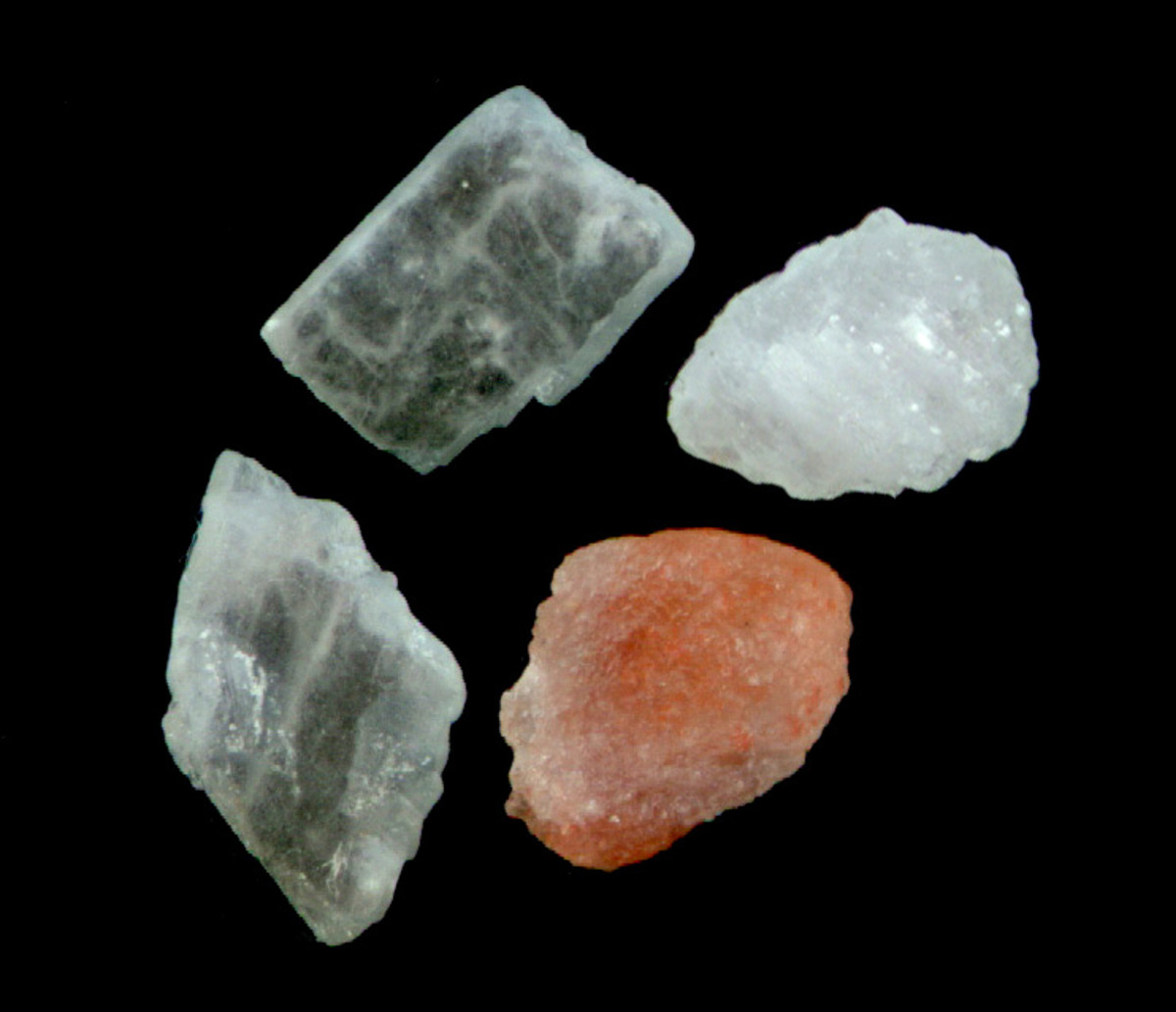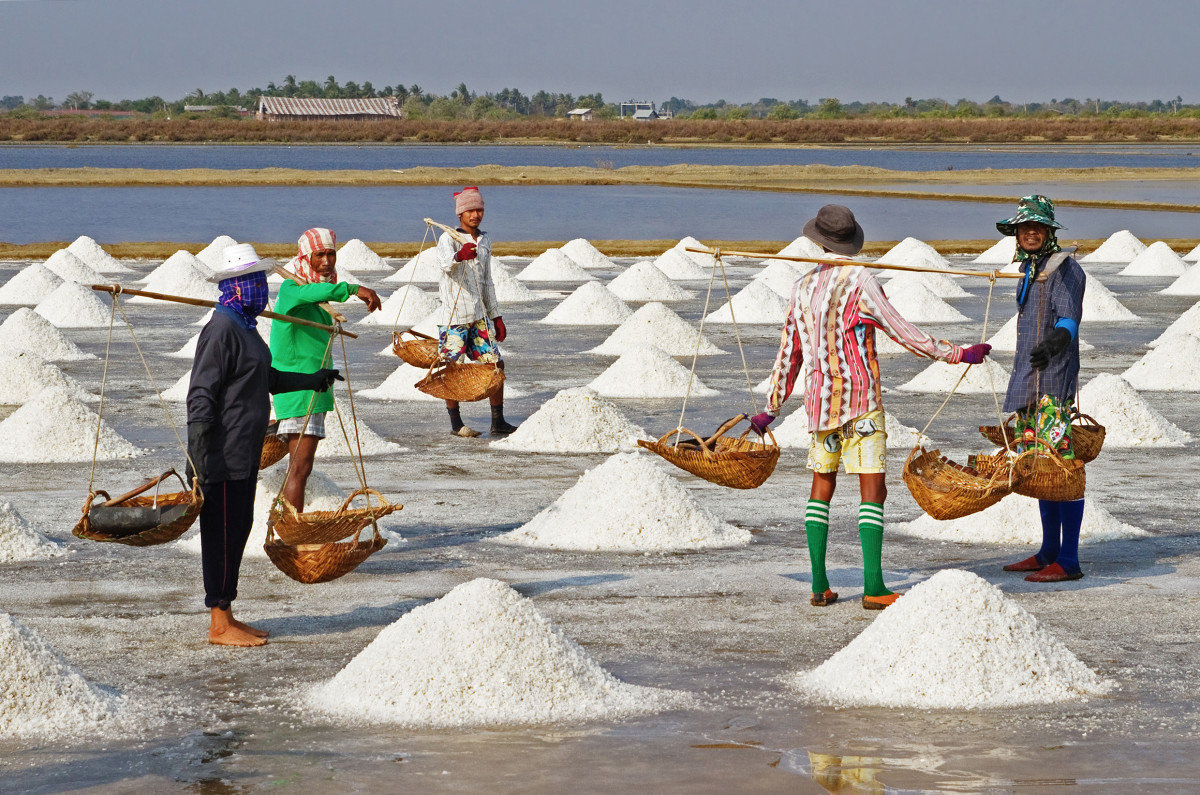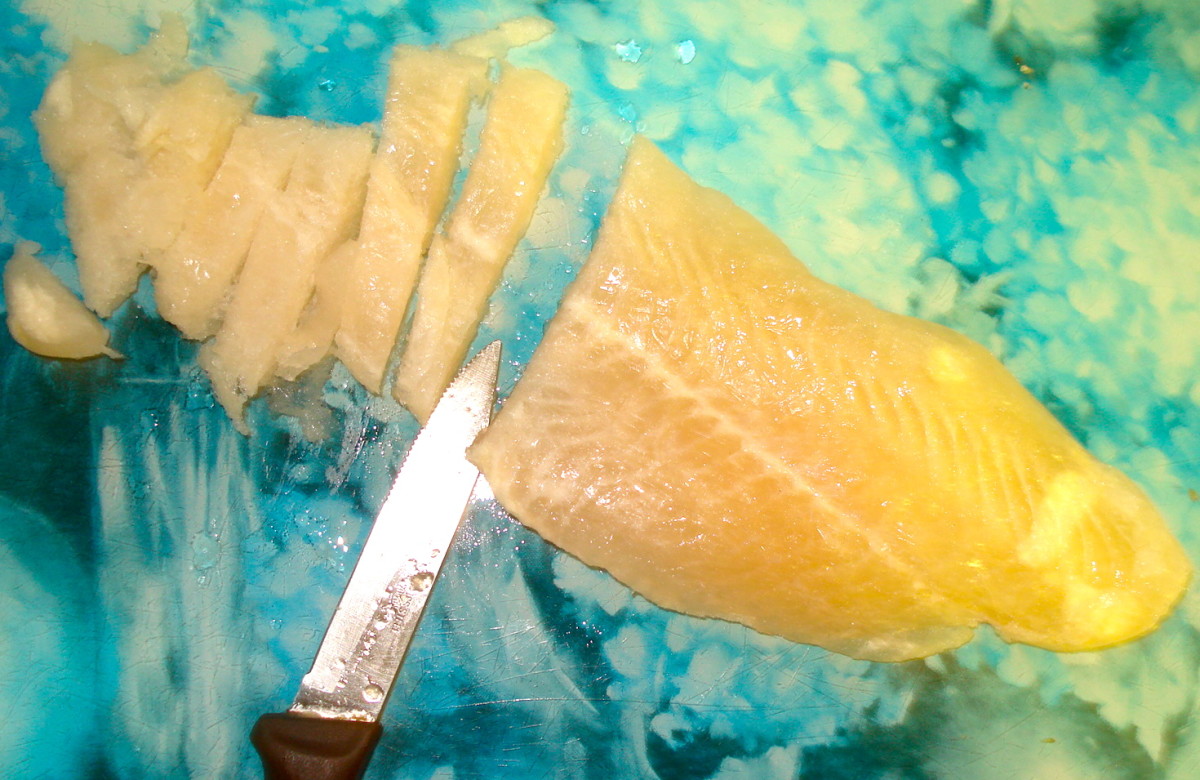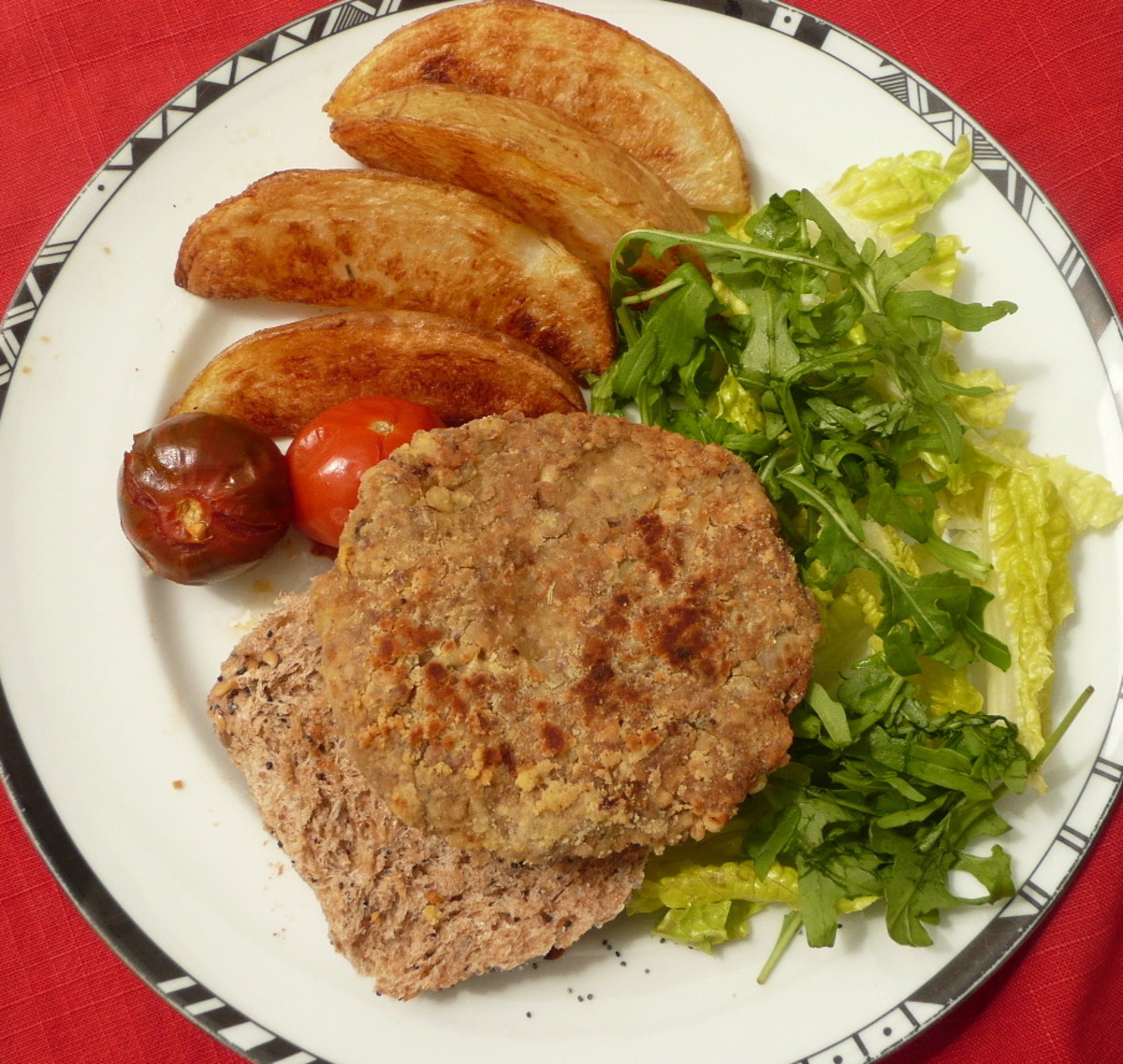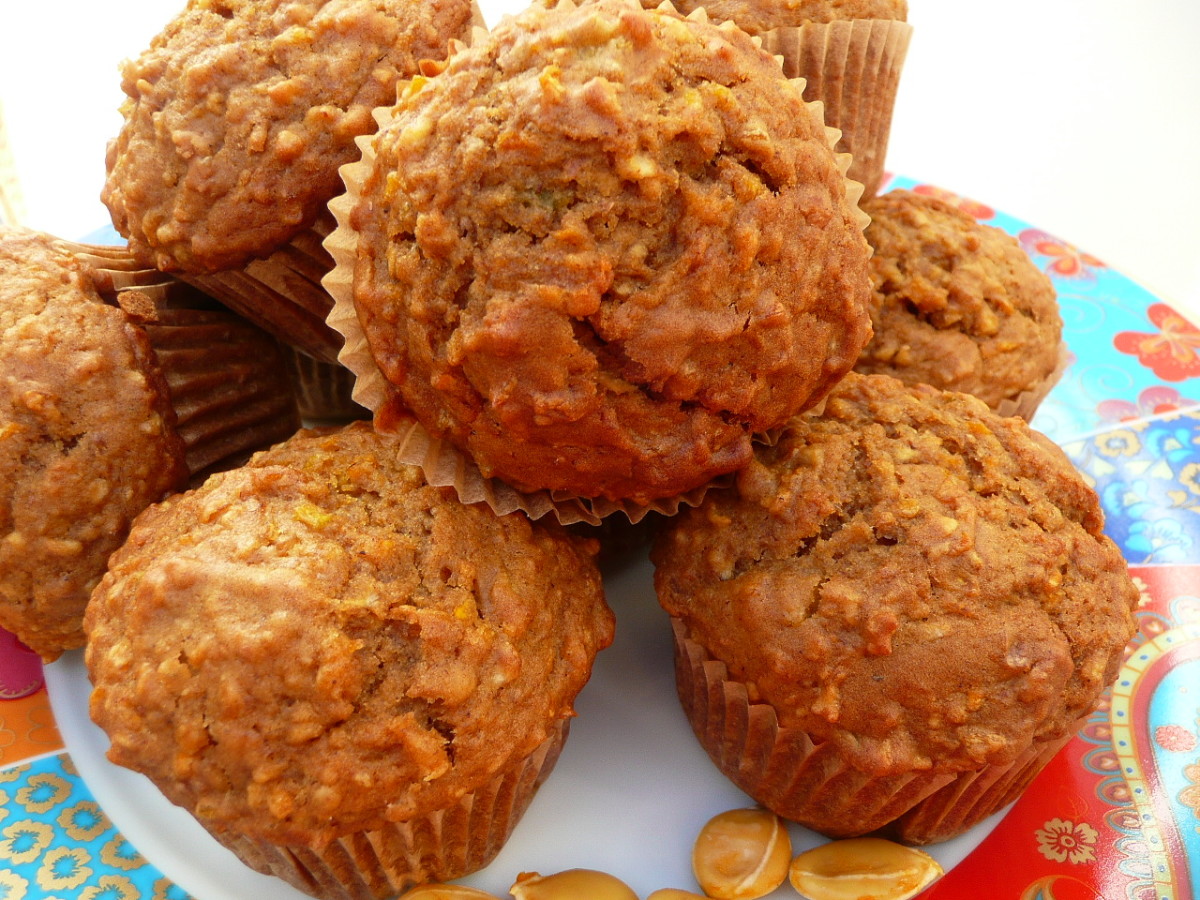What is Your Daily Sodium Intake (RDI)?
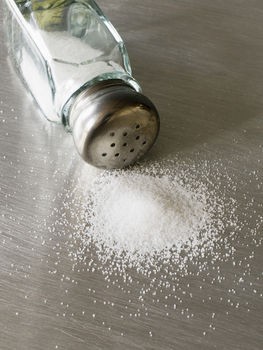
If you're diet is similar to most people, your daily sodium intake is considerably higher, which could lead to some health-damaging results.
Perhaps you are not even aware how much sodium is there in your food. Remember one teaspoon of table salt, (sodium and chloride), has 2, 330 milligrams (mg) of sodium. And it's not only table salt you should be curious about. Most processed and readymade foods have high-sodium contents.
Sea Salt and Table Salt What's the Difference?
Sea salt and table salt contain the same nutritional value, even though sea salt is generally promoted containing natural minerals. The most significant differences between sea salt and table salt are in their flavor, consistency and how it is process.
Sea salt is produced through evaporation of sea water or water from saltwater lakes, normally with hardly any processing. Sea salt is sodium plus chloride. Both are minerals. Sea salt contains 40% sodium and 60% chloride. It's that 40% that creates a lot of problem among medical practitioners today. Their studies indicate the associated risk of people overdoing salt intake in their regular diets.
Depending on the water source, sea salt retains many trace minerals and elements. The minerals add taste and color to sea salt, which is available in various coarseness degrees.
Table salt is usually mined from underground salt deposits. Table salt undergoes careful and heavy process to remove minerals and often contains an additive to prevent clumping. Nearly all table salt contain iodine, a valuable nutrient that helps support a healthy thyroid.
Your body needs sodium in small amounts
Your body requires a certain amount of sodium to function effectively:
- Sodium maintain the right balance of fluids in your body
- Sodium helps transmit nerve impulses
- Sodium stimulates contraction and relaxation of muscle tissues
Your kidneys naturally process and balance the amount of sodium stored in your body for maximum health. When your body detects low amount of stored sodium, your kidneys in effect retain the sodium. When there is high amount of stored sodium, your kidneys discharge the excess in urine.
However, for whatever reasons your kidneys cannot dispose of the excess sodium, the sodium will start to accumulate in your blood. Since sodium draws and holds water, your blood volume goes up, making your heart pump harder and amplifies pressure in your arteries. These types of health conditions like congestive heart failure, cirrhosis and chronic kidney complication makes it difficult for your kidneys to maintain sodium levels well-balanced.
Some people's health tends to be more easily affected or susceptible to the effects of sodium compared to other people. In case you're sodium sensitive, you retain sodium more quickly, causing fluid retention coupled with increased blood pressure. Whenever this becomes more serious, it can give rise to heart problems, hypertension, kidney complications and congestive heart failure.
What is the recommended daily sodium intake?
The Dietary Guidelines for Americans encourage reducing sodium intake to below 2 ,200 mg daily or 1,300 mg if you're age 50 and above, if you are black, if you have hypertension, diabetes or chronic kidney disorders.
Do not forget that these are upper limitations, and the lower consumption is often better, particularly when you're at risk to the negative effects of sodium. In case you aren't sure how much sodium you can put in your diet, consult your doctor or dietitian. Medical health experts can advise you according to your needs.
Common sources of dietary sodium
The average American gets roughly 3,300 mg of sodium a day definitely more than prescribed.
A number of the principal sources of sodium in a regular diet:
Ready-to-eat and processed foods - The greater number of sodium in a regular American diet is found in foods that are ready-made and processed. These food types are usually full of salt and ingredients formulated with sodium. Commercially-processed foods are bread, ready-made foods like pasta, meat and food items with eggs, hamburgers, cold cuts and bacon, processed cheese, soups, and fast foodstuffs.
Organic sources - Certain foods organically contain sodium such as all vegetables and common dairy products, various meats, and shellfish. Although they don't contain too much sodium, eating these selections will add to your total body sodium content. One example is, 1 cup (235 milliliters) of low-fat milk holds approximately 100 mg of sodium.
In your kitchen and at the table - Numerous meals require salt; a lot of people still add salt in their food at the table. Food flavorings in addition contain sodium as well. One tablespoon (15 milliliters) of soy sauce, for instance, has nearly 1, 000 mg of sodium.
High-sodium packed and canned foods
Moderation is highly advised using these products:
- Sachet/canned tomato sauce
- Easy to cook soups
- Canned pickles and sauerkraut
- Cured meats (bologna, salami, hot dogs, sausage)
- Processed cheese
- Condiments/flavourings (ketchup. mayonnaise, salad dressing)
- Snack/junk foods
Ways you can reduce your sodium intake
The majority of Americans can benefit from reducing the use sodium in their daily diet. A number of ways you can scale back on sodium:
Consume a lot of fresh foods - Virtually all healthy fruits and vegetables are low in sodium. Fresh meat is low in sodium unlike are canned and processed meat. Buy fresh or frozen poultry meat that hasn't been injected with sodium-containing solution. Study label or ask the meat supplier.
Choose low-sodium food products - If you do buy pre-made meals, pick the ones that are labeled "low sodium." Moreover, buy whole-grain rice and pasta rather than products that contain seasonings.
Minimize salt in your recipes as often as possible - You can eliminate the salt in most recipes, such as soups, stews and other home meals that you prepare. Try to find cookbooks that put emphasis on reducing health risks that is related to high blood pressure and heart problems.
Minimize the use of sodium-filled seasonings - Dressings, sauces, liquid seasonings most of these are loaded with sodium.
Use herbs and spices and other organic flavorings to season foods - Use garden-fresh or herbs, spices, and fruit juices to add special taste to your foods. Sea salt, however, isn't a smart choice since it has the equal amount of sodium as table salt.
Use salt substitutes carefully - Many salt substitutes include a mixture of table salt or other ingredients to get that normal salty flavor. If you often use substitutes, be prepared to get excess sodium in your body. Most salt substitutes consist of potassium chloride. Even if potassium may possibly lower much of the problems from excess sodium, a high amount of potassium is risky particularly if one has kidney complications or if you're undergoing treatments for congestive heart failure or high blood pressure.
By tasting food alone will not likely show you which foods are high in sodium. For example, you may not assume a bagel tastes salty, but a typical oat-bran bagel contains over 700 mg of sodium, and even a slice of whole-wheat bread has about 100 mg of sodium.
In what way will you be able to know which foods are high in sodium?
Study the food labels. The Nutrition Facts list available on nearly all packed and processed foods details the amount of sodium per serving. It also outlines whether the contents come with salt or sodium containing ingredients, including:
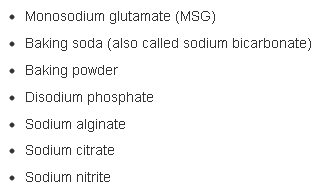
More ways to reduce your sodium intake
The grocery store contains a lot of food products branded as "reduced sodium" or "free of sodium." But don't believe that suggests they're completely low in sodium. Consider this; a can of chicken noodle soup claims to have 25% less sodium still contains a stunning 530 mg in a single servings. It's simply lower in salt not like regular chicken noodle soup which has over 800 mg of sodium in a cup.
Here's an outline of typical sodium suggestions and what they really stand for:
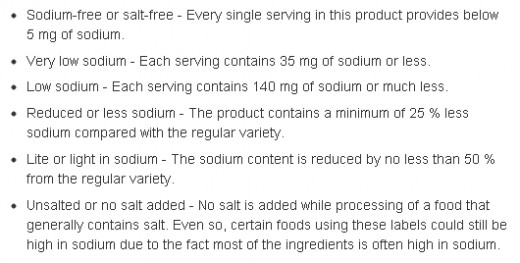
Steadily adapt your taste to low sodium diet
Now you learned how to adapt to low-salt diet, this only means you can start to enjoy less. Greatly reduce your use of salt bit by bit and your appetite will fine-tune.
After a couple of weeks downsizing on salt, most likely you won't miss it, and some foods will taste quite salty. Begin by adding no greater than 1/4 teaspoon of salt in the foods you prepare. Then put aside the salt shaker. As soon as you use less salt, your taste for it will reduce, helping you delight in the taste of food alone which absolutely benefit your heart.

